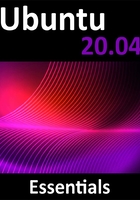
1.3 Editing Files
Configuring a Linux system typically involves editing files. For those new to Linux it can be unclear which editor to use. If you are running a terminal session and do not already have a preferred editor we recommend using the nano editor. To launch nano in a terminal window simply enter the following command:
# nano <file>
Where <file> is replaced by the path to the file you wish to edit. For example:
# nano /etc/passwd
Once loaded, nano will appear as illustrated in Figure 1-2:

Figure 1-2
To create a new file simply run nano as follows:
# nano
When you have finished editing the file, type Ctrl-S to save the file followed by Ctrl-X to exit. To open an existing file, use the Ctrl-R keyboard shortcut.
If you prefer to use a graphical editor within the GNOME desktop environment gedit is a useful starting point for basic editing tasks. To launch gedit from the desktop press Alt-F2 to display the Enter a Command window as shown in Figure 1-3:

Figure 1-3
Enter gedit into the text field and press the Enter key. After a short delay, gedit will load ready to open, create and edit files:

Figure 1-4
Alternatively, launch gedit from a terminal window either with or without the path to the file to open:
# gedit
# gedit /etc/passwd